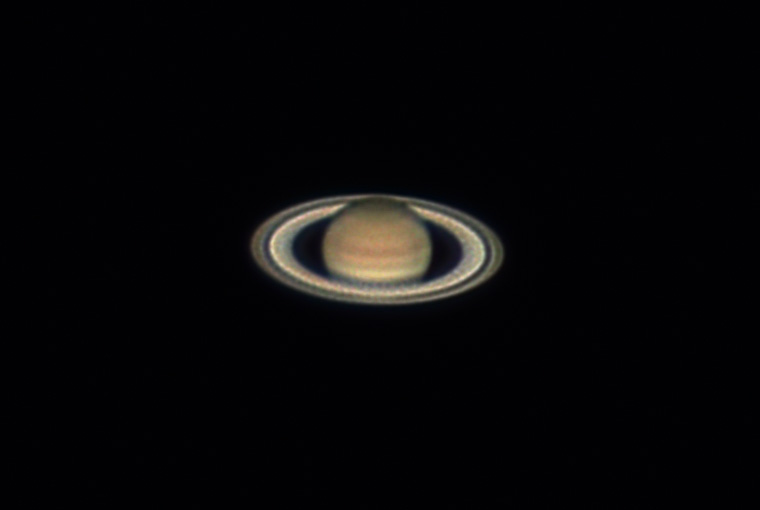|
Here in Payson, the seeing does not reach 2.0 arcseconds on most nights, so we learn to make the best of our equipment and the use of the proper image processing tools. This image above, is our best image to date from this site, and for those of you with poor seeing such as we have, I will give a bit of explanation on our tecnique below. This is a 2x enlargement from the original LRGB image. Note the recording of both Cassini and possibly Enckes Gap. Taking the image: 50 short .2 second exposures with a 2x barlow and extension tube yielded only about f/10. For the color, six .5 second exposures were taken through each RGB filter. The ten best Luminosity frames (no filter) were selected from the 50 by using Maxims Equalize view function. The 10 images were exactly aligned with the "Center Planet" funcition in AIP, resampled up 2x,and averaged. Maximum Entropy Deconvolution Algorithm was used to deconvolve the seeing. Click HERE to see the comparison of before and after deconvolution. The image was very mildly high pass filtered. For the color information, the best two each RGB images were chosen, averaged and the three combined in Maxim at standard ratio of 1:1:2. This was exported as a tif . In photoshop 6, the LRGB image was combined and converted to RGB. I would like to thank Rich Jacobs for his assistance in what is a very unfamiliar subject material for me. Instrument: 12.5" f/5 Home made Newtonian Platform: Astrophysics 1200 QMD CCD Camera: SBIG ST7E w/Enhanced Cooling Exposure: LRGB = .2:.5:.5:1 Filters: RGB Tricolor Location: Payson, Arizona Elevation: 5150 ft. Sky: Seeing FMHW = 2.0 arcsec, Transparency 8/10 Outside Temperature: 0 C CCD Temperature: -35 C Processing: Maxim DL, Photoshop, AIP4WIN, PW Pro.
|
||
|
|
||
|
FastCounter by bCentral |
